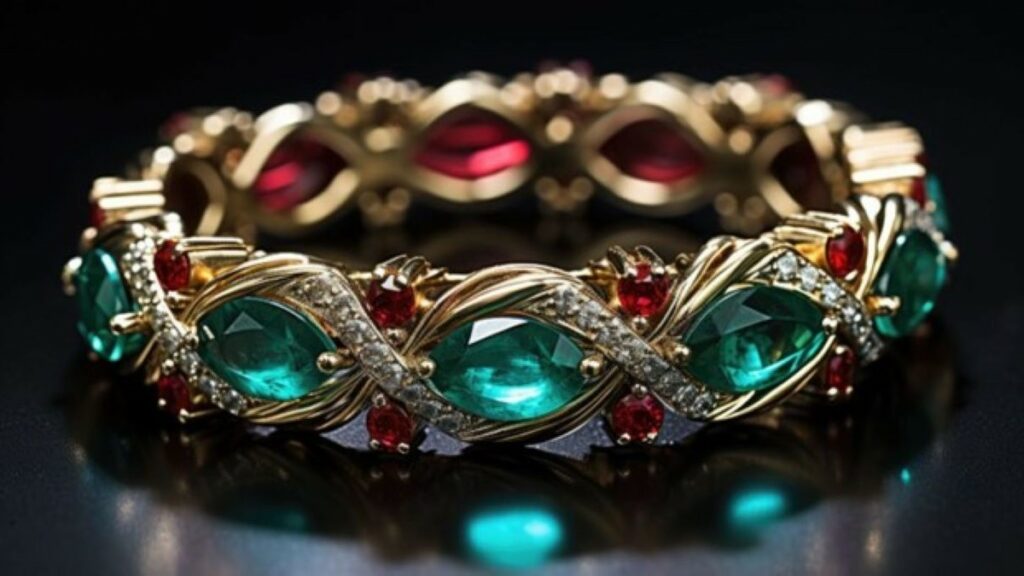Featured image by Kseniia Chunaeva via Vecteezy
When you saw that Tiffany’s diamond necklace sparkling brilliantly in their latest ad, you might have wondered how they managed to capture such elegance in a photograph. Well, it’s not a secret, but a science—the art of jewelry photography.
It’s about understanding the essentials, such as choosing the right equipment, using proper lighting, and employing editing techniques to capture the minute details. And yet, there’s more to it than meets the eye, nuances that can truly make your photos stand out.
Ready to uncover the hidden gems of this craft?
Understanding Jewelry Photography Basics
Diving into the world of jewelry photography, you’ll quickly realize that capturing the intricacy, beauty, and sparkle of these small adornments isn’t as simple as point and shoot. You’re not just snapping a picture. You’re crafting a narrative, a visual story that highlights the allure and craftsmanship of each piece.
Understanding the basics starts with the right equipment. For example, a DSLR or mirrorless camera, a macro lens for close-ups, and a tripod for stability are your essential tools. Lighting is also key. Natural light can bring out the shine and luster, but controlled studio lighting lets you manage reflections and shadows.
Additionally, the background shouldn’t distract from the jewelry. You’ll want to carefully select materials and colors that complement your pieces. You’ll also need to master the art of positioning. The angle and orientation can dramatically affect how the jewelry looks in the photo.
Post-processing isn’t cheating; it’s an integral part of the process. Tweaking the brightness, contrast, and saturation can make your jewelry pop. So don’t despair if your shots don’t look perfect right away. With patience and practice, you’ll be capturing dazzling photos in no time.
RELATED ARTICLE: CUBESAT CAMERAS: A REVOLUTION IN SPACE TECHNOLOGY
Ideal Equipment for Jewelry Photography
In the realm of jewelry photography, choosing the right equipment is just as critical as mastering the technique. The right tools will help you highlight the intricate designs and capture the shine of the precious stones.
For instance, the essential equipment you’ll need:
- A high-resolution DSLR or mirrorless camera:
- You’ll need a camera that can capture the fine details of jewelry. A high-resolution DSLR or mirrorless camera is perfect for this.
- Consider cameras with manual mode so you can have control over settings like ISO, shutter speed, and aperture.
- A macro lens:
- A macro lens allows for extreme close-ups, displaying the intricacies of jewelry pieces.
- Choose a lens with a focal length of 60mm or more to avoid distortion.
- Proper lighting:
- Lighting is crucial in jewelry photography. It can bring out the sparkle in diamonds and the luster in gold.
- Use a lightbox for diffused, even lighting. You might also want to invest in adjustable LED lights.
Importance of Proper Lighting in Jewelry Photography
Capturing your jewelry’s true beauty hinges on the mastery of proper lighting. It’s the lifeline of your photographs; it can highlight intricate details, draw attention to the brilliance of gemstones, and bring out the luster of metals.
Imagine the difference between a diamond shot under a dim light and one illuminated by a well-placed spotlight. The latter sparkles, catching the eye and revealing each facet’s unique beauty. In contrast, the former remains flat and lifeless, its potential allure hidden in the shadows.
But lighting isn’t just about brightness; it’s about direction and quality, too. Side lighting can emphasize texture, while backlighting can create a dramatic silhouette. Diffused light softens shadows and reduces harsh contrasts.
It’s crucial to experiment with different light sources and positions to find what best accentuates your jewelry product photography services.
Techniques for Capturing Details
While mastering the art of lighting is key to bringing your pieces to life, honing your skills in detail-oriented photography techniques will help you capture the intricate designs and unique features that make your jewelry stand out. But how do you ensure that every minuscule detail gets the spotlight it deserves?
Here are some techniques to help you capture the little details that make big impressions:
- Macro Photography: This technique allows you to photograph your pieces up close, revealing every tiny detail. You’ll need a macro lens for this.
- Use a tripod to eliminate camera shake.
- Use manual focus to ensure precision.
- Selective Focus: By adjusting your depth of field, you can highlight certain areas while softly blurring others.
- Keep the aperture wide open for a shallow depth of field.
- Close it down to bring more details into focus.
- Post-Production Editing: No matter how meticulous your shooting process is, there will always be room for refinement in post-production.
- Enhance sharpness and contrast to make details pop.
- Also use the clone tool to remove any unwanted elements.
RELATED ARTICLE: HOW TO TURN YOUR HOBBY INTO A PROFITABLE BUSINESS
Post-Production and Editing Tips
Once you’ve captured your jewelry in all its detailed glory, it’s time to delve into the world of post-production and editing to polish those images to perfection. This stage is integral to jewelry photography, and it’s where your raw images transform into gleaming digital masterpieces.
Firstly, it’s crucial to shoot in RAW format. This will give you a higher level of control when editing. It also allows for more flexibility in adjusting exposure, white balance, and other critical settings.
Next, be meticulous with your retouching. Remove any dust or scratches on the jewelry, enhance the sparkle in gemstones, and ensure that the colors are accurate. Tools like Adobe Photoshop or Lightroom can be your best allies in this process.
RELATED ARTICLE: HOW TO MARKET YOUR PHOTOGRAPHY BUSINESS
